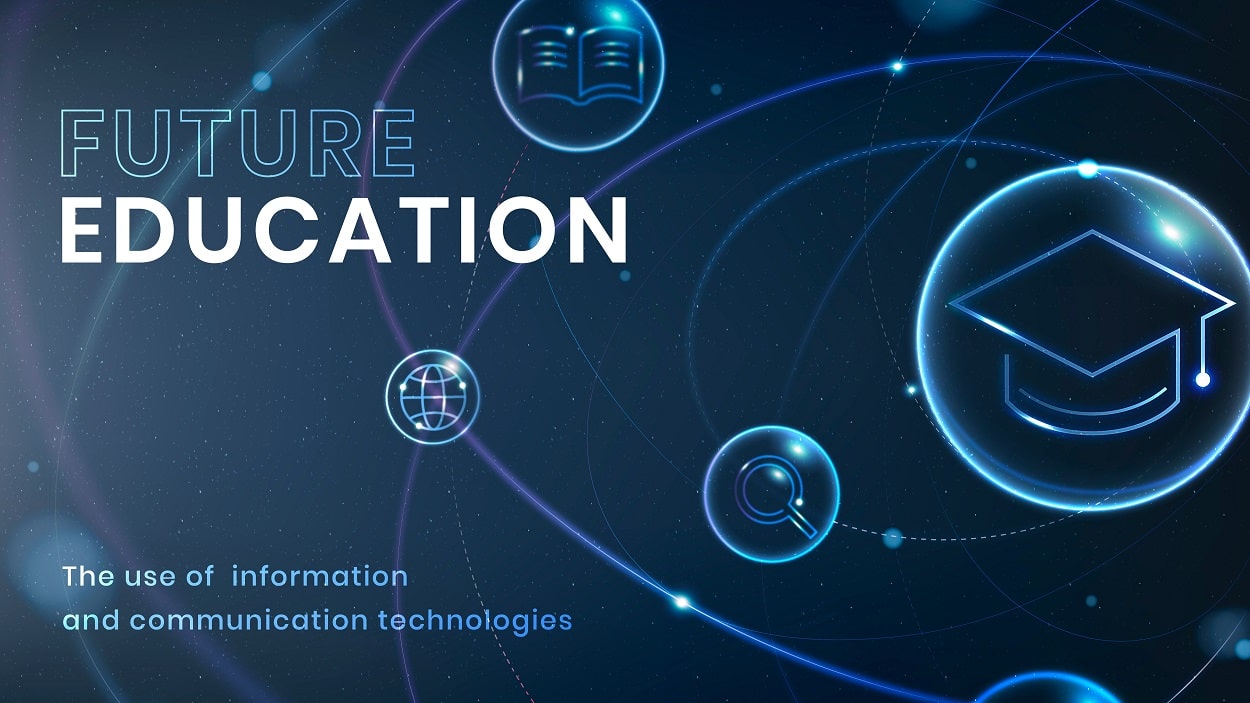
Exploring the Top New Educational Technology Trends Today with Examples that can revolutionize the way we learn and Teach. This comprehensive guide covers everything from augmented reality to governmentjob.pk research expert and professional guidelines date December 15, 2025.
Introduction
The field of education is evolving rapidly, and technology is playing an increasingly vital role in this transformation. From online learning platforms to virtual classrooms, educational technology has opened up new opportunities for students and educators alike.
In this article, we’ll explore the latest educational technology trends that are shaping the future of learning. We’ll discuss the benefits and challenges of these technologies, and consider their potential impact on the world of education.
| Educational Technology Trend | Definition | Benefits | Examples |
|---|---|---|---|
| Artificial Intelligence (AI) | AI is being used in education to provide personalized learning experiences, automate grading and assessment, and improve educational outcomes. |
|
|
| Virtual and Augmented Reality | VR and AR technologies are being used to create immersive learning experiences that help students better understand complex concepts. |
|
|
| Gamification | Gamification involves using game design principles to make learning more engaging and enjoyable. |
|
|
| Adaptive Learning | Adaptive learning involves using technology to create customized learning experiences that adapt to the needs and abilities of individual students. |
|
|
| Mobile Learning | Mobile learning, or m-learning, involves using mobile devices to deliver educational content and support learning on-the-go. |
| |
| Social Learning | Social learning involves using social media and other online platforms to facilitate collaborative learning experiences. |
|
|
| Personalized Learning | Personalized learning involves tailoring educational content and delivery to meet the specific needs and interests of individual students. |
|
|
| Online Learning Platforms | Online learning platforms provide a virtual learning environment where students can access educational content and resources. |
|
|
So, whether you’re a student, educator, or just interested in the latest developments in education, read on to discover the exciting new educational technology trends that are emerging to December 15, 2025.
Trend #1: Personalized Learning
One of the most significant trends in educational technology is the move toward personalized learning. Personalized learning involves tailoring educational content and delivery to meet the specific needs and interests of individual students.
Advances in artificial intelligence (AI) and machine learning have made it possible to create sophisticated algorithms that can analyze data on student performance and use this information to provide customized learning experiences.
Benefits of personalized learning include:
- Increased student engagement and motivation
- Improved learning outcomes
- More efficient use of classroom time
- Enhanced teacher-student relationships
However, there are also some challenges associated with personalized learning, including the need for high-quality data and the potential for privacy concerns.
Trend #2: Gamification
Gamification involves the use of game design principles to make learning more engaging and enjoyable. This can include elements such as points, badges, leaderboards, and challenges, which motivate students to participate and compete with one another.
The benefits of gamification in education include:
- Increased student engagement and motivation
- Improved learning outcomes
- More effective assessment of student progress
- Enhanced collaboration and teamwork
However, there are also some potential downsides to gamification, including the risk of students becoming overly focused on winning rather than learning, and the need for careful design to ensure that the game elements are aligned with the learning objectives.
Trend #3: Virtual and Augmented Reality
Virtual and augmented reality technologies are becoming increasingly popular in education, providing immersive learning experiences that can enhance students’ understanding of complex concepts.
Virtual reality involves the use of headsets to create a simulated environment, while augmented reality uses devices such as smartphones or tablets to overlay digital content onto the real world.
The benefits of virtual and augmented reality in education include:
- Increased engagement and motivation
- Improved understanding of complex concepts
- Enhanced spatial reasoning skills
- The ability to simulate real-world scenarios
However, there are also some challenges associated with these technologies, including the cost of equipment and the need for specialized training for teachers.
Trend #4: Online Learning Platforms
Online learning platforms such as Coursera, Udemy, and edX have become increasingly popular in recent years, providing students with access to high-quality educational content from anywhere in the world.
The benefits of online learning platforms include:
- Greater flexibility and convenience
- Access to a wider range of courses and subjects
- Lower costs compared to traditional classroom-based learning
- The ability to learn at one’s own pace
However, there are also some challenges associated with online learning, including the need for self-discipline and motivation, and the potential for social isolation.
Trend #5: Artificial Intelligence (AI)
Artificial intelligence is becoming increasingly important in education, providing tools and algorithms that can help automate tasks such as grading and assessment and provide personalized feedback to students.
The benefits of AI in education include:
- Increased efficiency and productivity
- More accurate assessment and grading
- Personalized feedback and support for students
Trend #6: Adaptive Learning
Adaptive learning is another trend that is gaining traction in the world of education. This approach involves using technology to create customized learning experiences that adapt to the needs and abilities of individual students.
Adaptive learning algorithms use data on student performance to adjust the difficulty and pace of the content, providing students with a more personalized and effective learning experience.
The benefits of adaptive learning include:
- Greater engagement and motivation
- Improved learning outcomes
- More efficient use of classroom time
- Enhanced teacher-student relationships
However, there are also some challenges associated with adaptive learning, including the need for high-quality data and the potential for privacy concerns.
Trend #7: Mobile Learning
Mobile learning, or m-learning, is becoming increasingly popular in education, providing students with the ability to access educational content on their mobile devices anytime, anywhere.
Mobile learning can take many forms, including educational apps, mobile-friendly websites, and e-books. This approach to learning is particularly well-suited to students who are constantly on the go, as it allows them to study and learn at their own pace.
The benefits of mobile learning include:
- Greater flexibility and convenience
- Access to educational content anytime, anywhere
- Lower costs compared to traditional classroom-based learning
- The ability to learn at one’s own pace
However, there are also some challenges associated with mobile learning, including the need for reliable internet access and the potential for distractions.
Trend #8: Social Learning
Social learning involves using social media and other online platforms to facilitate collaborative learning experiences. This approach can include activities such as online discussions, group projects, and peer reviews.
The benefits of social learning include:
- Increased engagement and motivation
- Enhanced collaboration and teamwork
- Improved critical thinking and communication skills
- The ability to connect with a global network of learners
However, there are also some potential downsides to social learning, including the risk of cyberbullying and the need for careful moderation to ensure a safe and productive learning environment.
FAQ
Q: Are these trends apply to all levels of education?
A: Yes, these trends can be applied to all levels of education, from K-12 to higher education. The use of educational technology is not limited to a specific level of education, and these trends can be adapted to meet the needs and requirements of learners at different levels.
Personalized learning, gamification, virtual and augmented reality, online learning platforms, adaptive learning, mobile learning, and social learning are all applicable to a wide range of educational contexts. However, the implementation of these trends may vary depending on the specific needs and resources of each level of education.
Q: Are these trends affordable for schools with limited budgets?
A: Some of these trends, such as online learning platforms and mobile learning, can be more affordable than traditional classroom-based learning. However, other trends, such as virtual and augmented reality, may require more significant investments in technology.
Q: How can educators stay up-to-date with these trends?
A: Educators can stay up-to-date with these trends by attending conferences, participating in professional development opportunities, and engaging with educational technology communities online.
Conclusion
As technology continues to evolve, so too does the world of education. These educational technology trends represent exciting opportunities for students and educators alike, offering new ways to engage with learning, collaborate with peers, and achieve academic success.
While these trends present their own unique challenges, the benefits of integrating technology into education are clear. By staying up-to-date with the latest educational technology trends, educators can help to ensure that their students are well-equipped for success in the 21st century.




